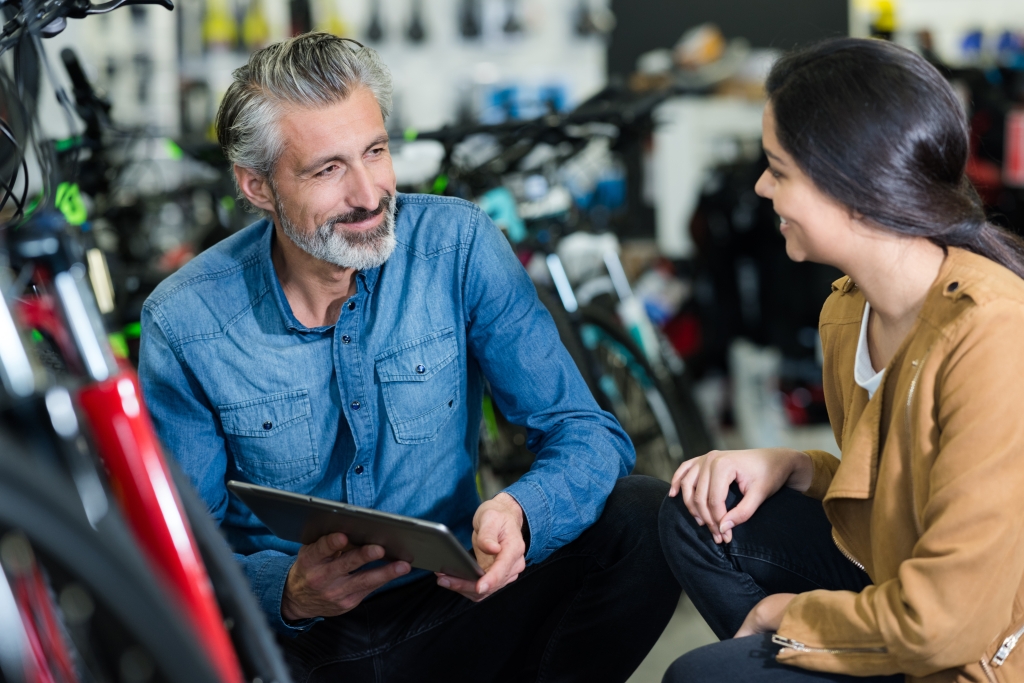The connected bike allows brands to create a strong relationship with cyclists. Before connectivity, this relationship could only exist between the point of sale and the cyclist.
The evolution of sales channels to promote the brand-cyclist link
Sales channels are evolving and some brands are choosing to sell their bikes directly via e-commerce. Many brands are exploring online sales or a hybrid format, but bike sales in special stores, sports shops or mass retailers remain the majority. Recently, it was the iconic brand Specialized that decided to change its distribution mix by opening its online store, as described by Koos de Boer (Specialized’s Marketplace Manager) in an article in Bike Europe :
“The last two years have clearly shown that in addition to our existing group of cyclists who buy from our retailers, there is a group of cyclists who want to buy their bikes online and if we didn’t offer our product through our online channels, they wouldn’t buy our product. We need to serve all cyclists.”
This is an opportunity for the brand to broaden its potential buyers and to provide additional service, by technician’s delivery to ensure the final adjustments. The relationship with distributors is always well established because it is at the nearest partner that the cyclist will be encouraged to do the maintenance of his bike. In the long term, the point of sale will play a key role in the cyclist’s experience.
Without a direct point of contact with the cyclist, the brand was unable to create a lasting link with him. Connectivity is shaking up the codes and rules in this sense, to allow brands to work on this link and promote customer satisfaction and loyalty.

Connected bike: creating a short and long-term brand-cyclist link
With the connected EAB, the cyclist uses a mobile application with the name and colours of the brand. He will create an account with information about his profile and link his connected bike to the application. The data collected on the profile and usage are transmitted to the brand, which increases its customer knowledge and can communicate directly with him.
Connectivity allows brands to better know their riders
Concerning cyclists, user accounts form a strategic database to develop marketing levers (Gender, age range, geographical area…) The base will be able to be segmented to address messages to customers and future customers. Regarding the uses, the brand will be able to analyze the most frequent uses and thus innovate and create its next products in this sense
By crossing users-profiles and uses, the brand can have a clear vision of which segment uses which bike model and how for an ever more efficient approach
Creating a brand community with the connected bike
Via the mobile app, the brand is at the heart of the mobility experience and can connect directly with cyclists. The brand can encourage cyclists to increase their frequency of use by shipping notifications, such as “Your bike hasn’t moved in 10 days. Isn’t it time for a ride?” The brand can also offer sales or services when relevant, e.g. “Your battery is below the 30% remaining life threshold. Have you thought about replacing it soon?”
In a community and gamification logic, the brand can create a real sense of belonging with challenges and competitions between cyclists, meeting points, and testers’ communities… If it is creative, the brand can make a place for itself in the cycling experience, thanks to connectivity.
Velco OEM, the turnkey solution to implement the brand-cyclist relationship
Velco offers brands a complete system to cover the theme of knowledge and customer relations with :
- a white-label mobile application to offer cyclists all the services of the connected bike with direct brand-cyclist exchanges (notifications)
- a digital platform for managing cyclists: subscriptions, use…





